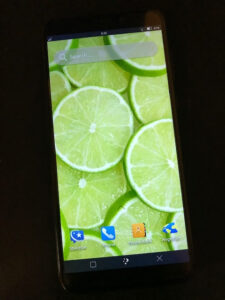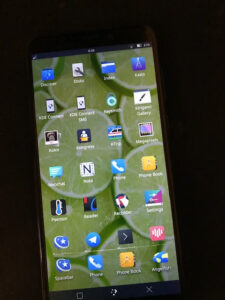What is the PinePhone

The PinePhone is a device in beta for mobile Linux developers. The PinePhone is one of the first attempts at creating a more robust market for Mobile Linux. It costs 150-200 USD, and it’s available from Pine64. Pine64 is a community driven company focused mainly on single board computers and gadgets. The phone is available for preorder on Pine64’s website.
Hardware
The hardware of the PinePhone is minimal, but usable. This phone is not a flagship Samsung or Apple phone. It is meant to be affordable to encourage ubiquity. This lowers the financial barrier to entry for developers.
Let’s start with what is good aspects of the hardware. The phone has an auxiliary audio port for wired headphones, a feature sadly missed on most new phones. It has SD expansion and charges on USB-C. The PinePhone has a great 5.59in screen and can be extended to larger displays with the docking bar. Its solidly built for a plastic phone and has a good weight to it. It has a easily removable back plate, and a removable battery for easy replacement. It has dip switches for some of the peripheral hardware. For instance, you can toggle the microphone camera modem and wifi.
That being said the PinePhone leaves much to be desired. As it stands the Phone has one of the worst cameras on a contemporary phone. It has a 2MP front camera and a 5MP rear camera with no software to preprocess the image. The camera gives you exactly what it sees warts and all. The battery life is barely adequate. It lasts about a day. The CPU gets very hot to the point I noticed a small deformation of the screen after compiling some software.
Software

The PinePhone runs a true GNU Linux operating system. Unlike Android which uses the Linux kernel to run a java virtual machine which is completely confined from accessing the low level processes. There are quiet a few software distributions for the Pinephone.The PinePhone runs free software applications for the most part. There have also been some efforts to run android applications via anbox and a port of android to the pinephone called Glo Droid.
The software on the PinePhone is constantly evolving and improving. Quality of use has improved greatly since I started using my PinePhone just a few months ago. Battery life has improved. Stability has been improved. Plasma Mobile has taken more projects on board. The future looks promising for software on mobile Linux. However this software is still in some cases very under developed. Features that you figure would be there aren’t in a lot of applications, but on the contrary some of the applications are more feature rich than you might expect. The podcast application Kasts is a good example of this.
One big deviance in the workflow is that there is no way to treat the phone as a mass storage device and mount it over USB. You really have to use the device as a Linux computer. To transfer files without the docking bar you use KDE Connect, sftp, ftp, or samba over wifi which is less than ideal. It ends up being more efficient to do many things from your PC over SSH and KDE Connect than actually use the phone.
Who is the PinePhone for?
The PinePhone is ideal for tinkerers with a strong background in Linux. Mostly as a secondary device. I desperately want the PinePhone to be daily driver ready. It makes a great impression, and it provides a promising glimpse into the future. It shows us the ideal for a quality freedom respecting mobile phone. However after using it extensively for my limited use case I can definitely attest it has a long way to go.
Moving forward
In the future I predict Linux on mobile devices will become more accessible thanks to the projects that came before. The PinePhone will be remembered fondly by those who used it, but a more eminent device which has yet to be invented will take its place. I look forward to reviewing the Pinephone again as the project matures.